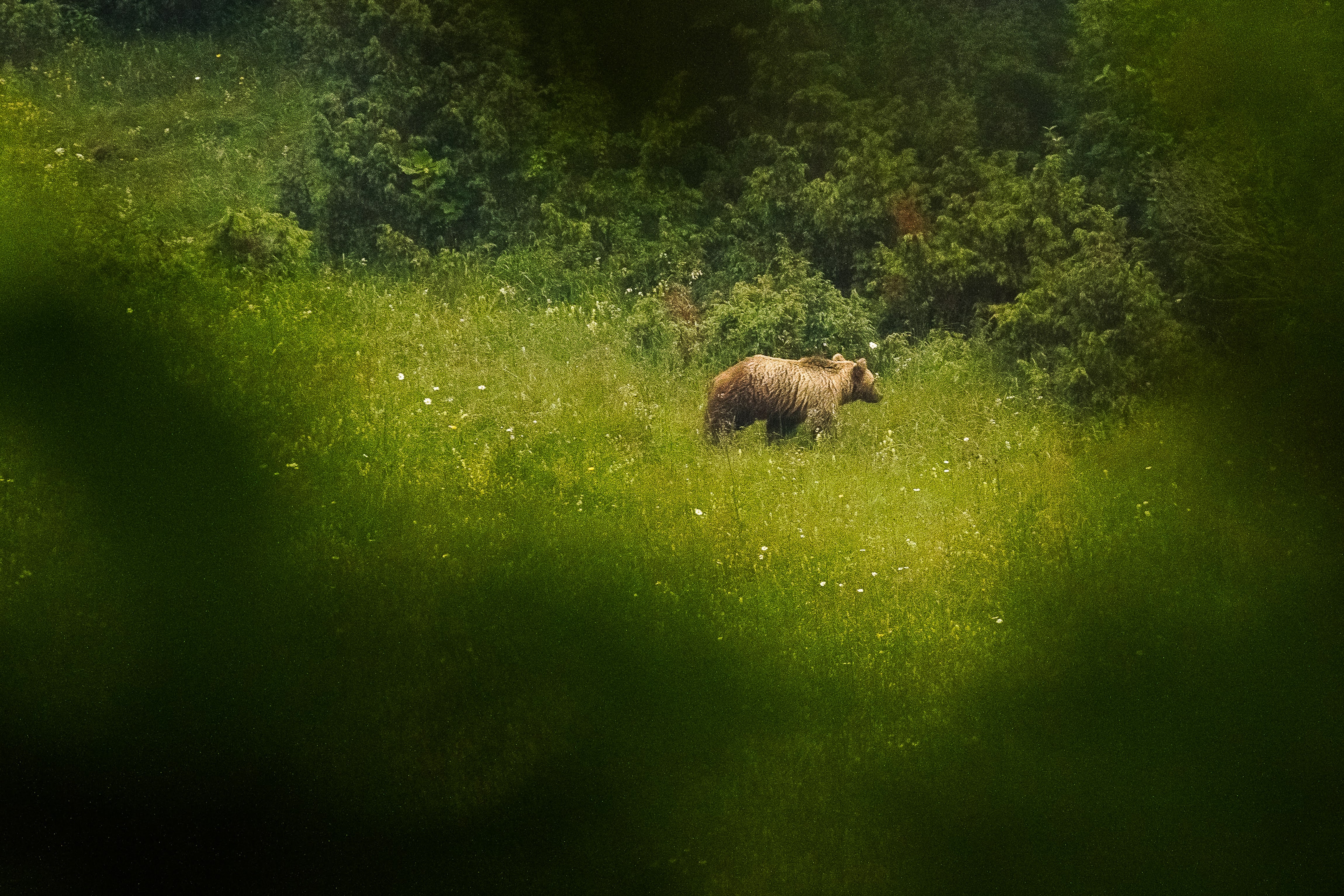Large carnivores (wolves, lynxes, bears), being the predators at the top of the food web, are key members of the ecosystem because they directly influence its health and stability. By hunting animals in poor physical condition or by feeding on animals that have already died, they affect the quantity and health of their prey, reduce the probability of disease spread and act as “cleaners” of the ecosystem.
The brown bear
The brown bear is the second largest terrestrial carnivore by size and body weight, right after the polar bear (Ursus maritimus). The male can weigh up to about 300 kg, while the female is much smaller and lighter, about 150 kg. Its body is covered with thick, mostly brown hair and undercoat. It has non-retractable claws on its digits. It can reach a speed of up to 50 km/h. Despite its size and weight, it runs well and climbs trees.
It is a solitary animal that can traverse large areas. Depending on age and sex, as well as food and partner availability, it roams areas of 100–300 km2. It is an omnivore, but most of its diet consists of food of plant origin (tubers, berries, hard fruits, but also herbaceous plants). However, it will also eat insect larvae and other invertebrates, as well as other available food of animal origin that it manages to catch or the remains of dead animals.
In winter, when there is not enough food, the bear hibernates, i.e. rests. Its heart rate, breathing and body temperature decrease. In fall, they accumulate sufficient fat stores (up to 30% of their body mass) and make a den, usually in holes in rocks or under the roots of large trees. They remain in this state until spring.
During winter rest, a female bear gives birth in a den to 1–4 blind and hairless cubs, each weighing about 350 g. As bear milk is extremely concentrated and nutritious (12% milk fat), the cubs quickly gain weight and get stronger.
- The lifespan of a bear in nature is about 25 years, while in captivity it can live up to 40 years.
- It carries plant seeds on its fur and in feces and thus helps them spread.
- Due to its plant-based diet, its feces do not have an unpleasant smell.
The brown bear was once widespread throughout Europe, Asia and North America. Today, its range has been significantly reduced: in Europe, only individual populations have survived in the wildest parts of the European peninsula. One of those populations is the Dinaric population, which also includes bears whose habitat is in the territory of Croatia, including the Plitvice Lakes National Park. Bears have been systematically monitored in the Plitvice Lakes National Park for many years, and it has been determined that around 30 bears are present in the Park at any given time. Bears, like other wild animals, are not aware of the borders of states and national parks, so they all move freely inside and outside the borders of the Park.
Habitat diversity
Diversity, health and richness of a habitat is important for the diversity and abundance of flora and fauna. It is precisely the diverse and healthy habitats, where plants and mushrooms can find ideal growing conditions and animals can find food and shelter, that are characteristic of the Plitvice Lakes National Park, and this is the reason why there are so many bears in this area. Because of its importance to the ecosystem, the bear has become the symbol of the Plitvice Lakes National Park.
In Croatia, the bear is a strictly protected species. The biggest threats are the disappearance, fragmentation or destruction of habitats, roads and waste disposal sites. In order to reduce their suffering, it is necessary to protect waste disposal sites and make it impossible for bears to approach them, and to build “green bridges” on roads in bear habitats. And most importantly, for the survival of the entire flora and fauna, including humans, it is essential to keep the entire ecosystem healthy and vital, and biodiversity preserved.
Bears are timid animals and if they sense (hear, see or smell) a human, they will move away from them. If you do meet it in nature, it is important to remain calm and slowly move away from its vicinity. And it is absolutely not advisable to approach bear cubs. Their mother is certainly nearby, and bears are very caring mothers and will defend their cubs, which can be very unfortunate and dangerous for humans.
When it stands up on its hind legs, the bear does not show aggression, but checks its surroundings.



